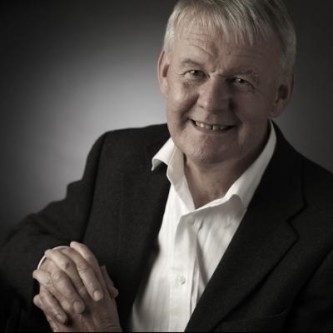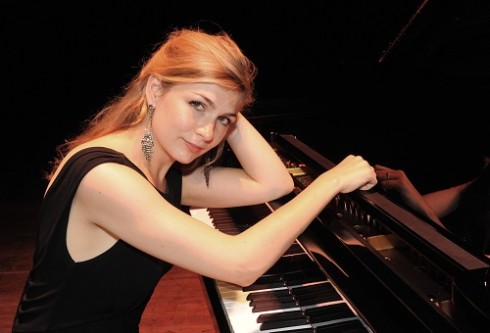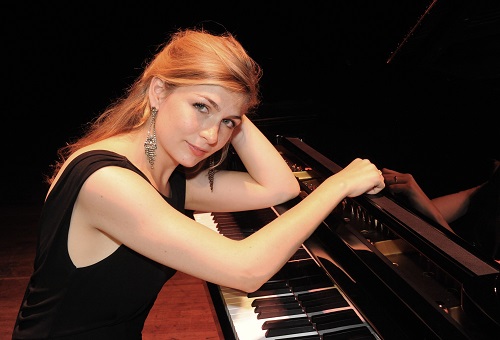 United Kingdom Messiaen: Concert 3 – Peter Hill (piano), Concert 4 – Cordelia Williams (piano), Dora Stoutzker Hall, RWCMD, Cardiff, 17.11.2016. (GPu)
United Kingdom Messiaen: Concert 3 – Peter Hill (piano), Concert 4 – Cordelia Williams (piano), Dora Stoutzker Hall, RWCMD, Cardiff, 17.11.2016. (GPu)

Concert 3:
‘La colombe’ (from Préludes)
Le traquet stapazan’ (from Catalogue d’oiseaux)
La fauvette Passerinette
‘L’alouette lulu’ (from Catalogue d’oiseaux)
Concert 4:
Vingt Regards sur l’Enfant-Jesus.
The two concerts on the first day of this mini-Festival (for review click here) had interleaved works by Messiaen with works by other composers. Thereafter, we were given Messiaen undiluted, in a form of total immersion, as one might say, which made for a splendidly fulfilling experience. It began with a lunchtime talk and recital by Peter Hill, a biographer of Messiaen and a doyen of Messiaen studies, as well as a pianist long-established as one of the finest interpreters of Messiaen’s work. In his prefatory talk Peter Hill spoke of his personal relationship with Messiaen, seeking his advice on the performance of his piano music and simply getting to know the man. Talking of Messiaen’s personality, Hill made repeated use of words such as “simple”, “straightforward”, “unpretentious” and “generous”. He saw him as, essentially, a thoroughly “practical” man. Hill’s recital was decidedly ‘avian’ in its choice of works. He began with one of (actually the first) of the 8 pieces which made up Messiaen’s Préludes (1930), the composer’s earliest published work, ‘La colombe’. Here, the dove is not, to any great extent, represented by any imitation of its song – the trills and flutterings high on the keyboard evoke the movements of the bird’s wings at least as much, if not more, as its song. The interest seems rather to focus on the dove’s theological significance and symbolism. This beautifully melodic piece (marked – and played – ‘Lent, expressif, d’une sonorité très enveloppé’) unmistakably evokes traditional images of the Holy Ghost (“I saw the spirit coming down from heaven like a dove” John 1:32), as well as the dove’s long-standing association with purity and peacefulness.
‘La colombe’ made a beautiful ‘appetiser’ for this recital. Hill followed it with ‘Le traquet stapazin’ from the Catalogue d’oiseaux (1956-58). In the Catalogue this piece is, in a sense, the third in a set of three, after ‘Le loriot’ and ‘Le merle bleu’. In these three pieces Messiaen presents, not just the song of a single bird, but an aural picture of the larger context, the geographical setting in which the bird is heard and the ‘chorus’ of other birds with which it is associated. For both ‘Le merle bleu’ [Blue Rock Thrush] and ‘Le traquet stapazin’ [Black-eared Wheatear] this means a stretch of the French Mediterranean coast near Banluys-sur-Mer close to the border with Spain, which Messiaen visited in 1957.
In ‘Le merle bleu’ the environment evoked is that of the sea-edge, with its cliffs and gulls; in ‘Le traquet stapazin’ the music has moved inland a little. Messiaen himself, in his notes, characterised the landscape as “vineyards in terraces … the garrigue: a jumble of low, spiny shrubs, gorse, rosemary, citrus, kermes oak … cork-oak” (quoted from the account of a later Messiaen inspired visit to the scene made by Laurence Rose: http://www.naturemusicpoetry.com/news-and-blog/in-the-footsteps-of-messiaen).
In ‘Le traquet stapazin’ the titular songster of the piece is not its dominating presence: it is heard primarily making interjections amongst the voices of a number (perhaps 10 or 11) of other birds, which include the spectacled warbler, the goldfinch, the swift and the ortolan bunting. Of at least equal importance to the birdsong, however, is the evocation of the landscape and the way in which the piece ‘records’ the passing of time through its musical imagery of the movement of the sun. I am not enough of an ornithologist to distinguish the songs of all the birds heard in this work, but to listen to it, especially when played with the insight and technique which Peter Hill brings to it, is certainly to have a vivid sense of the larger scene, of June sunlight by the Mediterranean, of the relatively distant sound of the sea and of varied birdsong, as well as to find oneself admiring the musical architecture of the whole thematically, harmonically and rhythmically. The best brief analysis I know is by Hill himself, in The Messiaen Companion he edited in 1994 (pp.336-8).
This exciting lunchtime recital continued with a piece unknown at the time of Messiaen’s death in 1992. Hill had worked with Messiaen, between 1986 and 1991, on the interpretation of the composer’s piano works. In his pre-concert talk, Hill explained that he had later found an almost complete score of an unknown piano piece, titled ‘La fauvette passerinette’ [The Subalpine Warbler] in 2012, when Messiaen’s widow, the great pianist Yvonne Loriod had invited him to look through the substantial archive of Messiaen’s papers (then in the Messiaens’ Paris apartment, but since transferred to the Bibliothèque Nationale). There were a few lacunae in the score, but Hill was able to fill these after consulting Messiaen’s notebooks of the period (1961) of the piece’s composition. Hill assured us that he had had to provide “no glue” of his own invention in order to complete the score. Hill premiered the work, some 11-12 minutes long, in 2013 and recorded it for Delphian on a CD (DCD 34141), issued in October 2014 (a CD which also contains performances of ‘La colombe’ and ‘Le traquet stapazin’. It is a striking and distinctive work, in which, unlike ‘Le traquet stapazin’, there is little or no attempt to represent the bird’s wider natural context. The melodic line in which the song of the traquet stapazin is presented is the subject of a degree of thematic development unusual in Messiaen’s ‘bird’ pieces; ‘La fauvette passerinette’ ends (before a last chirrup!) with a climactic toccata of considerable power. It was a real treat to hear what must have been the Welsh premiere of the piece, full of fiercely joyful celebration, as much (however unconsciously) of Messiaen’s skills as a composer, as of the original beauty of the bird’s song.
It was to the Catalogue d’oiseaux that Peter Hill returned to complete his recital, with a performance of ‘L’alouette lulu’ [The Woodlark]. Here there was something magical about the way Hill contrived the gradual (and almost imperceptible) emergence of the woodlark’s song as the dominant element in the piece, and the way in which that song rises above the chords representing night. All-in-all, this was a lunchtime recital full of insights into Messiaen’s keyboard writing from a pianist who had the imprimatur of the composer’s approval – “I am a passionate admirer of Peter Hill’s playing” said Messiaen. So am I, especially after this first chance for many years to see and hear him play live.

The evening concert of the second day brought us a complete performance of the Vingt regards sur l’enfant-Jésus by the astonishing young pianist Cordelia Williams. It was a remarkable evening and my only cause for sadness was that this concert was the least well-attended of the whole three days. To keep this review to a reasonable length I shall say rather less about this concert than the quality of Cordelia Williams’ interpretation really deserves. It was an interpretation of genuine profundity and spirituality; she brought incandescent, but precisely controlled, power and virtuosity to some of the pieces (such as the ‘Regard de l’Esprit de Joie’, No. X) and, conversely, an almost ethereal sublimity to some of the quieter and slower pieces (such as No.1, ‘Regard du Père’ and No.4 ‘Regard de la Vierge’ – Messiaen’s Virgin is a Byzantine icon not a Raphael Madonna). Her control of the horribly difficult sixth Regard, ‘Par lui tout a étè fait’, was breath-taking. Indeed, she was virtually flawless in the face of the huge demands that the Vingt regards makes on the performer. That a relatively young pianist (and, moreover, one who was visibly pregnant should play so much of it (so well!) from memory was astonishing. She must have been exhausted by the close and I wish that there had been more there in the audience to show her how much she had been appreciated.
The Vingt regards is, incontrovertibly, one of the peaks of the modern solo piano repertoire. It is also one of the very greatest modern works of religious music. It is the apotheosis of the musical treatment of the birth of Christ, Nativity music entirely without sentimentality, free of the musical equivalents of smiling cows or red-breasted robins. Yet, being a work by Messiaen it is, inevitably, not entirely without its birds. There are the songs of lark, warbler, nightingale, goldfinch, serin and others in the ‘Regard des hauteurs’ and the chorus of triumphant birds at the close of the ‘Regard de l’Esprit de Joie’, for example. For Messiaen the birds could not be absent from this work, a work whose essential subject is the Incarnation, the Mystery of the Word becoming Flesh, the Flesh becoming Word, the Timeless appearing within time, and for Messiaen, the birds are the most natural ‘language’ in which to explicate that Mystery.
Glyn Pursglove
